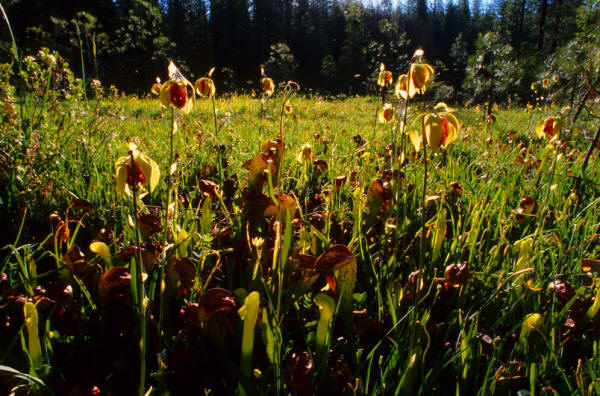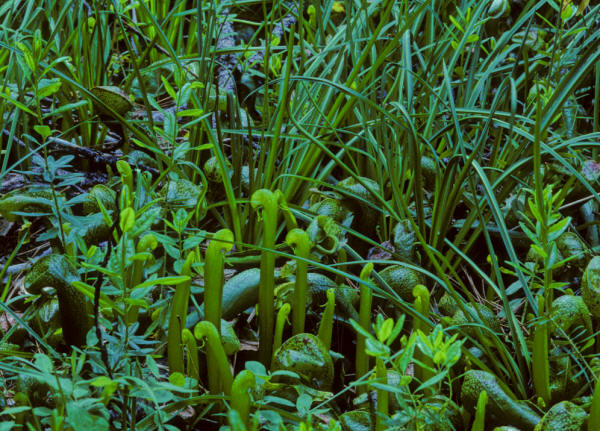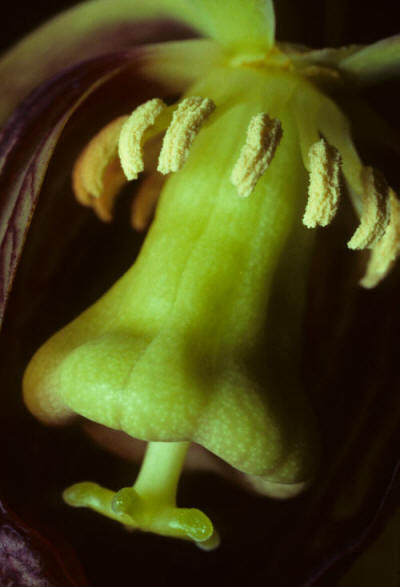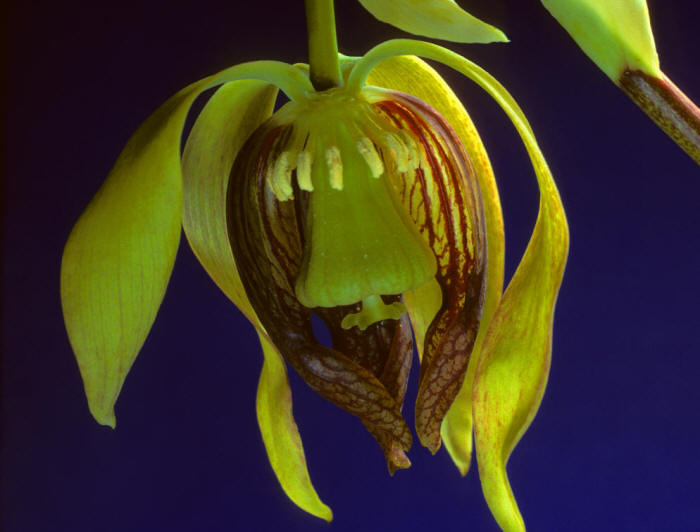|
Carnivorous Plants Story
|
||
|
|
Darlingtonia californica A typical northern California meadow where Darlingtonia colonies are seen. The grass-covered surface looks almost flat, but waters flow constantly on the stream, sometimes with rushing sound. New pitcher leaves start to sprout out right after flowering.
New leaves -- largest of the season..
A bell-shaped ovary hangs from the base. Five-pointed stigma at the end of the short style protruding underneath the ovary bottom. Surrounding the ovary base are 15 or so stamens loaded with ample pollen.
When the trigger hairs on the inner surface of the trap lobes are stimulated, the clam-shell-shaped trap closes suddenly --- often in less than a half second --- fast enough to capture such agile insects as a fly quite comfortably. Intermeshing marginal spines effectively prevent the prey's escape. After the initial rapid closure, the insect's struggle inside the trap further stimulates the trigger hairs, causing the trap lobes to close even more tightly. In a day or so, the trap is seen tightly sealed around the free margins of the lobes, with the marginal spines pointing outwardly. The digestive fluids start to ooze into the now sealed trap cavity. As the digestive process progresses, the products of digestion are swiftly absorbed through the leaf and are carried away to the other parts of the plant.
Introduction Venus Flytrap Sundews Pitcher Plants Cobra Plant Butterworts Bladderworts
|
|



